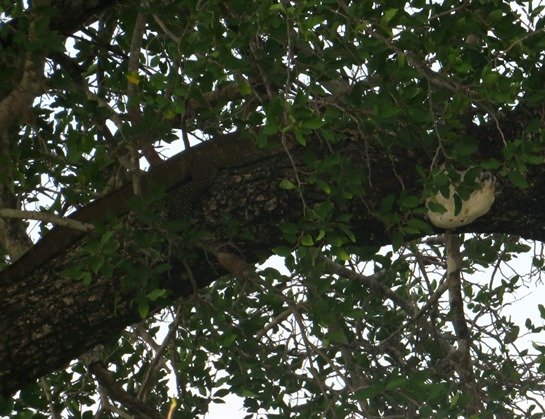Lodgings in tamboti

Author: Ivan Lätti
Photographer: Ivan Lätti
Free accommodation is plentiful in forest trees, also here in the Lowveld, you may be glad to discover. Just make sure of who else has already checked in at the tree of your fancy. Some of the locals are audacious enough to take a nibble of almost everybody, given the great variety of acquired tastes among forest dwellers.
Adjacent sites, not quite rooms, have been taken on this tamboti branch by a frog and a leguaan or Nile monitor. The frog is not visible, but its white nest is. This nest is made by a male foam-nest frog or foam-nest treefrog, or several of them.
This happens as soon as a female of the species begins to lay eggs. The foam is whipped up by the male using his back legs on his own sperm, a bit like a housewife may whip egg whites into an airy foam for meringues or other special foods; using her hands and the appropriate utensils, of course.
Imagine the scene when a small ensemble of male treefrogs solemnly sit in a circle excreting sperm and wobbling their hindlegs around a growing blob of white foam into which a female is studiously depositing numerous little eggs. It might inspire a latter-day Vivaldi to produce an allegretto or vivace con brio piece of violin music.
The eggs of the female treefrog embedded in this sperm lather hatch in their own time. So, the frogs, both male and female may be long gone from here.
Leguaans are carnivorous. They eat insects when young, moving on to crabs and fish as their requisite hunting and fishing skills develop. Leguaans do climb trees for feasting on birds’ eggs and nestling birds. Tamboti is a very easy tree to climb for both leguaan and the long-fingered treefrog, given the hard, cracked-up bark for grip or purchase.
Whether this leguaan is here for a siesta in the hot afternoon, searching for bird nests or eyeing the conspicuous frog nest for a mouthful of baby amphibian was never clarified.

